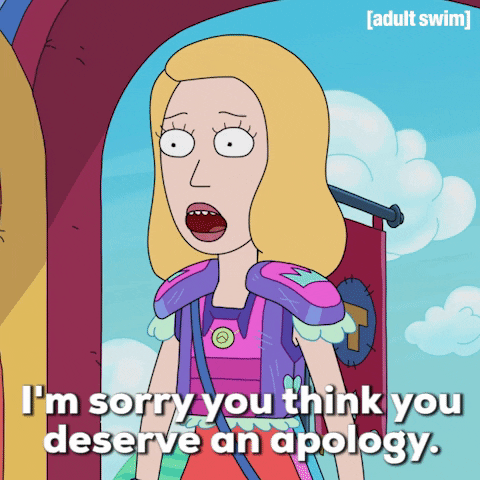The Power of a Well Intentioned Apology
Let’s be honest. Apologizing is hard. Nobody likes to admit to being wrong. But sometimes we do or say things that are inappropriate and affect others negatively, and when those situations arise, apologizing is crucial in repairing the situation and moving on.

A good apology requires three things: Authenticity, intention, and courage.
The fact is that most people don’t know how to apologize. They passively say the words “I’m sorry”, and expect things to be cleared up and for life to move on. For hurt feelings to actually dissipate, the intention behind the apology is far more important than the apology itself. An intention is what you set out to do, and the intention behind the apology will determine what comes out of that apology. In other words, if your intention is to own up to what you’ve done, address it, make sure the other party is heard and understood, then your intention is good.

Before you do apologize, ask yourself these questions: Are you apologizing because you were caught or are you apologizing because you genuinely feel remorse for your actions? Are you ready to take ownership of your own actions without making excuses or deferring any of it on outside circumstances or the person you’re apologizing to? If the answer to either of those questions is “I dunno”, then you need to take a step back and really think about why this apology is necessary. It’s better to do it right than to do it half-assed. But if you’re ready and you’ve set you’ve set your intention and have mustered up your courage and authentic self, here’s how to properly say sorry.

Step 1) Explain your behaviour. Remember, you have done the shitty thing here. Own it. Don’t make excuses. Don’t blame anything or anyone else. Try to dig deep to understand why you might have behaved that way or said the things you did. This is a good opportunity to get to know yourself better.
Step 2) Explain your understanding of how your behaviour affected the person you are apologizing to. Make sure to also give them an opportunity to to express their point of view and how this event affected them. This is a good opportunity to learn a different point of view.
Step 3) Apologize whole heartedly and earnestly. Again, don’t make excuses. Phrases such as “I’m sorry but…”, “I’m sorry if…”, “I already said..” will completely undo any attempts at an apology. This is a great article that expands on this: The Top 12 Fake Apologies — And What Makes For An Authentic Apology.
Step 4) Explain what you have learned from this experience and steps you will take to not repeat it again. This is a good chance to grow as a person and who doesn’t want to grow?!
Step 5) Allow the other person to share their point of view. You’ve had a chance to speak and now it’s time to listen to the other person speak their mind. Perhaps they will also apologize for doing or saying something to contribute to the issue.
Step 6) Now let things go and move on from this with a new life lesson. Don’t repeat your behaviour.

Remember, saying sorry is not easy for anyone. It requires putting aside your ego and leaning in with courage and authenticity. It shows you’re willing to look at yourself, your words, your actions, and you’re willing to take a big step to correct a situation. It shows growth. At the end of an apology, you’ll be left with a better, stronger relationship, and pride in yourself. Go say sorry to someone now, even if you don’t need to. Just kidding, don’t do that.
